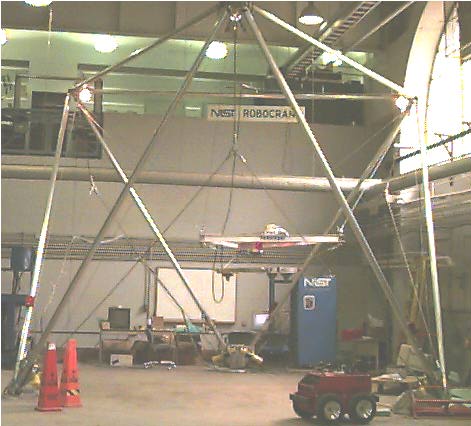
We’re reading some thoughts from Eric Hunting on the Open Manufacturing list regarding future possibilities for large-scale 3D printing, specifically for housing. He’s got some very intriguing ideas.
Like Hunting, we’ve also noticed that large scale 3D printing for architecture typically involves concrete or similar heavy materials. These types of materials imply not only heavy-duty (and expensive) extruding equipment, but also the resulting prints are massive and require significant transportation efforts.
These approaches have also resulted in a centralized concept for such machines, as they are so large, heavy and unwieldy as to be impractical to be used on the job site.
Hunting proposes something different:
But recently we have seen the emergence of corn resin based wood composites that allow 3D printing of this very wood-like material likewise produced from recycled waste. This is potentially much more efficient than cutting sheet materials by CNC and, when combined with soy-based polyurethane foam, would likewise produce a structure that’s entirely compostable. Following the examples of things like the Modernist classic Venturo housing or using monocoque bay shells akin to the bay system of WikiHouse, these could be quite light and easy to assemble and quite comfortable compared to ‘plastic’ prefab houses of the past as their basic material would have the look, feel, workability, sound characteristics, and even smell of natural wood.
If such “light” materials were used to produce architectural parts, then the corresponding 3D printing equipment could be simplified. Hunting says:
As I see it, in-situ house printing is going to long be stymied by the bulk and complexity of mobile hardware that, basically, has to span the whole volume of the structures being produced and, for some time, will take almost as much time and skill to setup as is necessary to build a house by hand from scratch.
Likely true. But what’s the answer? Hunting suggests using a cable-based 3D printer approach, such as the concept illustrated above:
The much simpler solution is something known as a cable-based Stewart platform or ‘robocrane’. A robocrane needs only two kinds of functional elements; small self-contained cable winches with digitally encoded motors and an end-effector or work platform that’s suspended by them. A gantry structure is optional. Winch modules could be readily mounted to ceiling, walls, and floor and digitally adjust for variable sizes of spaces.
We suspect this approach could be more successful, or at least less expensive to try. Is it being done today? We’re not sure, but with the amount of 3D printing innovation happening today, we wouldn’t be surprised if something like this was announced next week.

